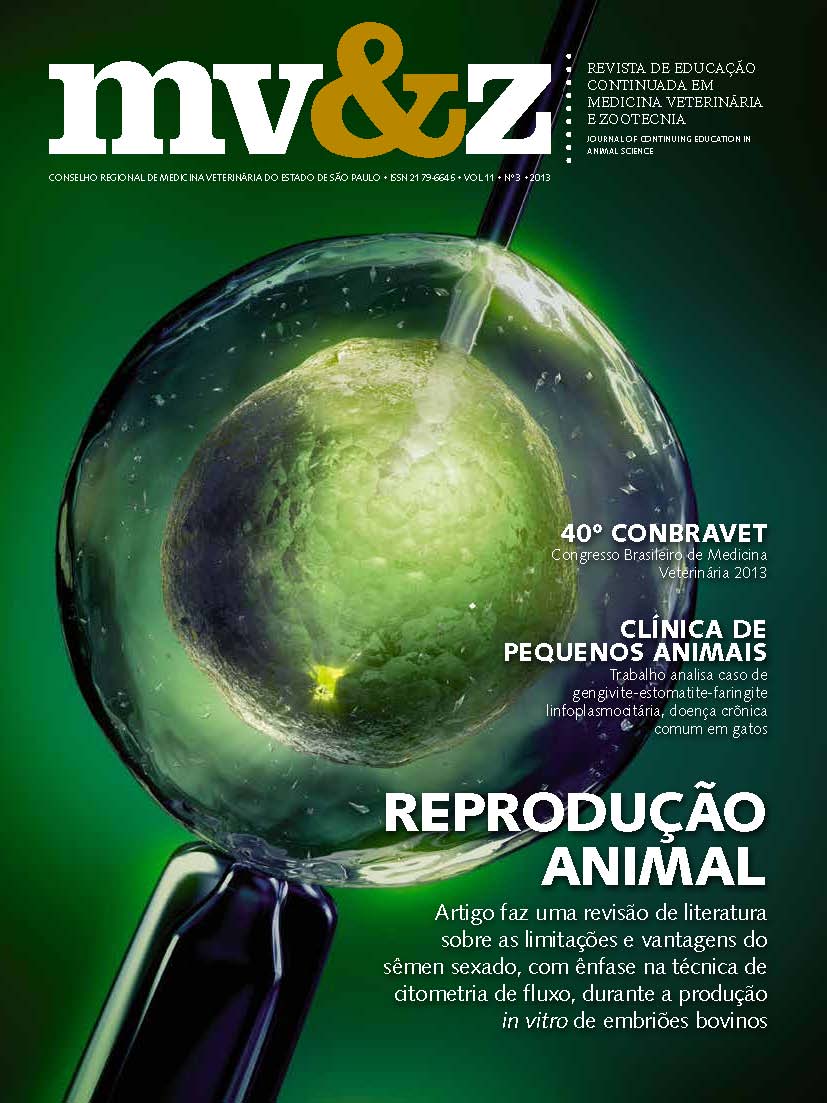Rabies virus neutralization assays: comparison of three fluorescent inhibition tests in cell cultures
Conteúdo do artigo principal
Resumo
The Rapid Fluorescent Focus Inhibition Test (RFFIT) and the Fluorescent Antibody Virus Neutralization Test (FAVN) are the rabies virus neutralization assays recognized by World Health Organization and the World Organization for Animal Health, to quantify rabies virus neutralizing antibodies (VNA). In the Pasteur Institute of Sao Paulo/Brazil, the Simplified Fluorescence Inhibition Microtest (SFIMT) is the method used for titration of VNA in serum samples of vaccinated individuals. The aim of this study is the comparison of VNA titration methods: FAVN, RFFIT and SFIMT. One hundred ninety‐three sera samples from dogs and cats were analyzed by the three methods. The statistical tests used to compare the techniques were the McNemar test and Kappa coefficient (CI=95%) to qualitative analyses (<0.5 IU/mL and = 0.5 IU/mL) and Student’s t‐test for quantitative evaluation of mean of the VNA titers. The VNA titers ranged between 0.09 IU/mL to 7.79 IU/mL for FAVN test, 0.05 IU/mL to 9.55 IU/mL for RFFIT and 0.12 IU/mL to 3.70 IU/mL for SFIMT. The dilution factor values in LogD50 ranged from 0.48 to 2.38 (GM=1.57) for FAVN, 0.42 to 2.60 (GM = 1.79) for RFFIT and 1.17 to 2.68 (GM=2.08) for SFIMT. Qualitative analysis of the results showed considerable agreement between the tests (p‐value=1.0; Kappa=0.73). In the quantitative analysis of VNA titers means, for FAVN (GM=1.68 IU/mL) the mean was numerically lower than RIFFT (GM=2.1 IU/mL), and between FAVN and SFIMT (GM =1.36 IU/ mL) it was numerically higher. The determinations of diagnostic sensitivity and specificity between FAVN and RIFFT were 94.9% and 80.6% and between FAVN and SFIMT were 94.2% and 74.1% respectively. The FAVN, RFFIT and SFIMT showed good agreement, because statistics do not differ in their percentages in the evaluation of VNA.
Detalhes do artigo
Seção
1. Autores mantém os direitos autorais e concedem à revista o direito de primeira publicação, com o trabalho licenciado sob a Creative Commons Atribuição-NãoComercial-SemDerivações 4.0 Internacional
2. Autores têm autorização para assumir contratos adicionais separadamente, para distribuição não-exclusica da versão do trabalho publicada nesta revista (ex.: publicar em repositório institucional ou como capítulo de livro), com reconhecimento de autoria e publicação inicial nesta revista.
3. Autores têm permissão e são estimulados a publicar e distribuir seu trabalho online (ex.: em repositórios instituicionais ou na sua página pessoal) a qualquer ponto antes ou durante o processo editorial, já que isso pode gerar alterações produtivas, bem como aumentar o impacto e a citação do trabalho publicado (Veja O Efeito do Acesso Livre);
